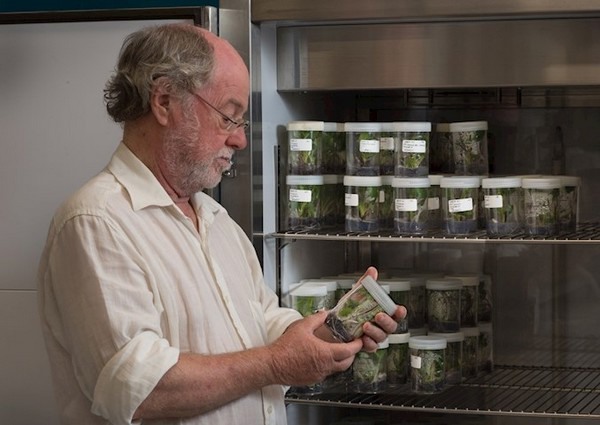Australian scientists are working towards the development of banana plants that are resistant to a deadly disease that is threatening global production.
Panama Tropical Race 4 (TR4) is a soil-borne fungus that has impacted plantations in most banana-growing regions including North Queensland; Asia including the Philippines, China and Indonesia; the Middle East; Africa and most recently, South America. Currently, the disease, which cannot be eradicated, survives in the soil for decades.
Nearly all banana varieties can be impacted, including Cavendish, which accounts for an estimated 50 per cent of the bananas grown worldwide and about 95 per cent of the bananas grown commercially in Australia.
To combat the threat, the Queensland University of Technology (QUT) and Hort Innovation have launched a $9.8M research project that aims to develop two new varieties that are resistant to TR4. The work will be delivered by the QUT Centre for Agriculture and the Bioeconomy.
QUT project lead, Professor James Dale, said his team aims to develop Cavendish and Goldfinger varieties using gene-editing techniques through the five-year project. The aim, he said, is to support food security in Australia and worldwide.
“The original Cavendish varieties emerged probably more than 1000 years ago,” he said. “It is an excellent banana but it is susceptible to some devastating diseases including Panama Disease TR4.
“There is also concern that the banana industry worldwide is too dependent on a single variety and that greater variety diversity is highly desirable.”
Prof Dale said the Goldfinger banana is resistant to many diseases including TR4 and researchers aim to use recent advancements in gene editing to improve this variety to appeal to the Australian palate.
“We are now in a position to make very small changes in a banana genome that can have dramatic effects on the phenotype of the banana whether it is disease resistance, fruit quality or fruit taste and texture,” he said.
Hort Innovation Hort Frontiers Business Development Manager Alok Kumar said the research, which is being conducted in consultation with Australian banana growers, will meet the industry’s priority to develop new TR4 disease-resistant varieties that meet consumer quality expectations.
“TR4 is widely considered the most lethal banana disease in the world,” he said. “This new project will arm Australian growers with the tools they need to sustainably and effectively produce Australia’s number one selling grocery item for years to come.”
Australian Banana Growers’ Council (ABGC) Chief Executive Officer Jim Pekin said TR4 has been the predominant issue for the industry since it was discovered in Australia’s major growing area six years ago. He said access to a variety that is resistant to TR4 and continues to be market acceptable would give banana growers certainty about the future.
For more information:
Kelly Vorst-Parkes
Hort Innovation
Tel.: +61 0427 142 537
Email: kelly.vorst-parkes@horticulture.com.au

